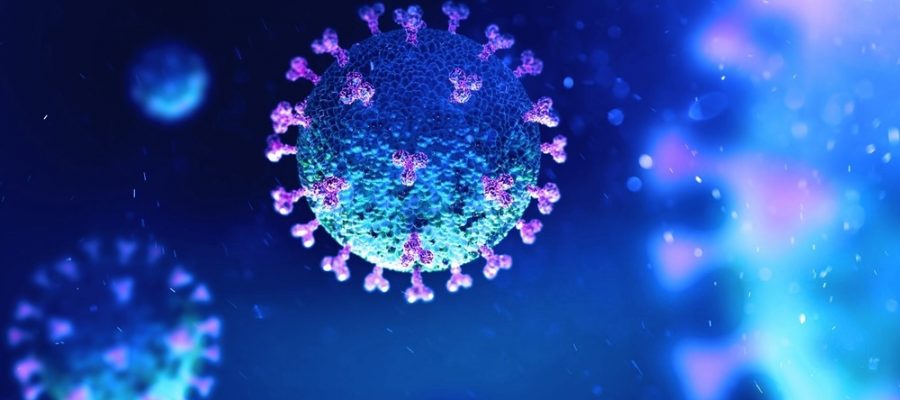A recent opinion piece published in PNAS discussed the sequence of events concerning the coronavirus disease 2019 (COVID-19) pandemic to provide evidence against the alleged leak of severe acute respiratory syndrome coronavirus 2 (SARS-CoV-2) and the Ebola virus from viral research laboratories in Wuhan, China, and West Africa, respectively.

Argument against leaks
The authors believe that one of the major factors that made laboratory leaks of the virus an unlikely theory was the presence of multiple research labs in China conducting studies on coronavirus. These labs were established by the Chinese government between 2004 and 2008 after the first severe acute respiratory syndrome coronavirus (SARS-CoV) outbreak worldwide.
The argument against the animal origin of SARS-CoV-2 includes the fact that the closely related bat coronavirus is found 750 miles away in Laos and southern China, making it impossible for the virus to travel to Wuhan, where the first outbreak occurred without causing infections along its route.
However, the authors presented evidence from the West African Ebola virus outbreak showing that viruses can emerge at locations very far away from their original occurrence site. Similar patterns were seen for SARS-CoV, where the virus emerged in multiple cities in China far away from where the closely related bat progenitor was found.
Furthermore, analyses using the SARS-CoV-2 genomic sequences revealed the acquisition of a furin cleavage site by SARS-CoV-2. A furin cleavage site can make an avian flu virus with low pathogenicity highly transmissible and pathogenetic, indicating that a mutation in one of the naturally occurring coronaviruses found in animals could have been the origin of SARS-CoV-2.
However, the sequence data was used by one study to show similarities of certain regions of the SARS-CoV-2 genome to human immunodeficiency virus (HIV) glycoproteins to purport further the idea that SARS-CoV-2 was a laboratory-engineered virus. The study was retracted later for scientific flaws. Further comparative sequence analysis by the author and his team led them to conclude that a natural origin of the virus through mutations was the most likely explanation.
Absence of evidence of leaks
Genetics & Genomics eBook

One of the lab leak theories suggested that the SARS-CoV-2 progenitor might have leaked through experimental human cell cultures of animal models or were engineered to enhance the virulence. Theories also suggested that the similarity of SARS-CoV-2 to coronaviruses found in animals such as pangolins and bats were also engineered.
Other theories include accidental infections in research scientists collecting samples. The authors state that given the evidence that the virus did not jump directly from bats to humans, and a wildlife intermediary was an essential step in the process, it is unlikely that a scientist got infected during sample collection, which generally only involves bats.
Furthermore, the assertions that SARS-CoV-2 emerged as a completely human-adapted virus, which was indicative of an engineered virus, also seem unlikely given that various other mammals, including felines, deer, otters, mink, and some canids, are also susceptible to the virus.
Additionally, wild species such as the white-tailed deer could be potential reservoirs for SARS-CoV-2 even after the virus has stopped circulating in human populations. Previously, SARS-CoV was shown to have infected multiple intermediate hosts, such as raccoon dogs, ferret badgers, and civets, before infecting humans.
Studies have claimed that amino acid and genomic sequences of the furin cleavage sites and restriction enzyme sites, respectively, indicate the synthetic origin of SARS-CoV-2. However, similar furin cleavage sites have been found in two other viruses that cause the common cold. Similar restriction enzyme sites have been found in bat coronavirus genomes, suggesting that these regions are relatively common.
Wildlife origins of the virus
The insertion of a 12-nucleotide insertion outside the reading frame supports a natural mutation theory rather than a laboratory-controlled mutation since experiments generally do not involve out-of-frame insertions or deletions. Furthermore, indels, or insertions and deletions, have been further detected during the evolution of subsequent SARS-CoV-2 variants.
Additionally, multiple lines of evidence, including the proximity and direct connections of the early coronavirus cases to the Huanan market, which sold live wild animals, and the presence of SARS-CoV-2 nucleic acids in the cages and drainage in the areas housing wildlife in the Huanan market support the wildlife origin of SARS-CoV-2. Other novel coronaviruses, such as Middle East Respiratory Syndrome (MERS) and SARS-CoV, have also emerged through zoonotic transfers in the last ten years.
Conclusions
Overall, the opinion piece provided various arguments against the synthetic or laboratory-derived origin and leak of SARS-CoV-2. The author also presented evidence supporting the wildlife origin of the virus and discussed the possibility of other zoonotic events in the future. Developing effective vaccines and therapeutic countermeasures is essential to prevent future coronavirus pandemics.
- Garry, R. F. (2022). The evidence remains clear: SARS-CoV-2 emerged via the wildlife trade. PNAS. 119 (47) e2214427119. doi: https://doi.org/10.1073/pnas.2214427119 https://www.pnas.org/doi/10.1073/pnas.2214427119
Posted in: Medical Science News | Medical Research News | Disease/Infection News
Tags: Amino Acid, Cell, Cold, Common Cold, Coronavirus, Coronavirus Disease COVID-19, covid-19, Enzyme, Evolution, Flu, Genome, Genomic, HIV, Immunodeficiency, Laboratory, Mutation, Nucleotide, Pandemic, Research, Respiratory, Restriction Enzyme, SARS, SARS-CoV-2, Severe Acute Respiratory, Severe Acute Respiratory Syndrome, Syndrome, Virus
.jpg)
Written by
Dr. Chinta Sidharthan
Chinta Sidharthan is a writer based in Bangalore, India. Her academic background is in evolutionary biology and genetics, and she has extensive experience in scientific research, teaching, science writing, and herpetology. Chinta holds a Ph.D. in evolutionary biology from the Indian Institute of Science and is passionate about science education, writing, animals, wildlife, and conservation. For her doctoral research, she explored the origins and diversification of blindsnakes in India, as a part of which she did extensive fieldwork in the jungles of southern India. She has received the Canadian Governor General’s bronze medal and Bangalore University gold medal for academic excellence and published her research in high-impact journals.
Source: Read Full Article
